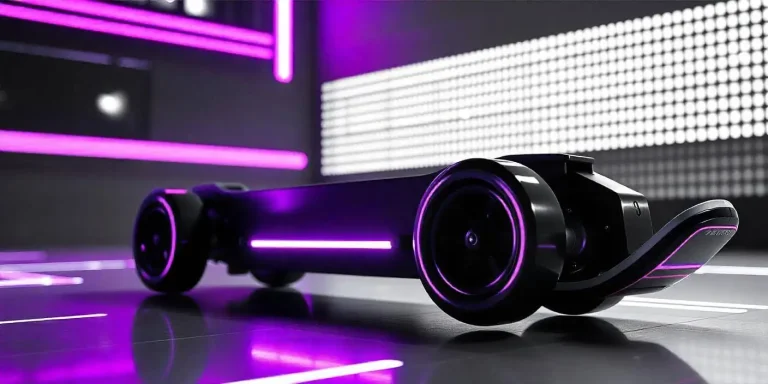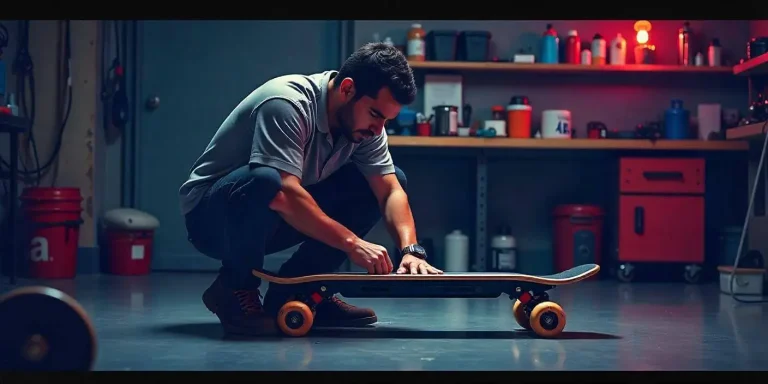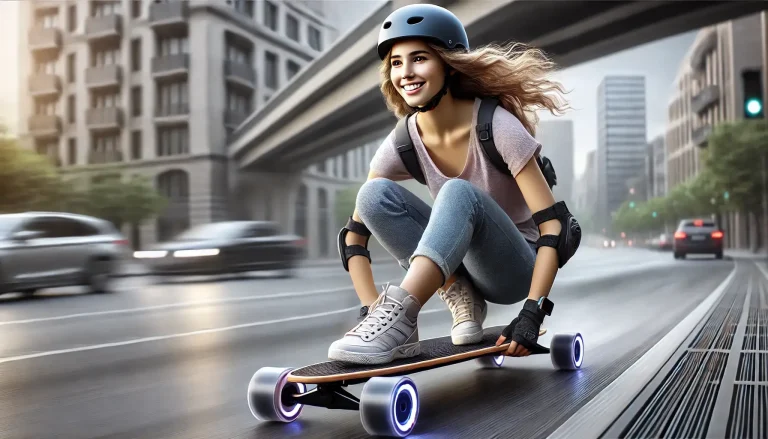Are Electric Skateboards Safe? What You Need to Know Before Riding 2025
Electric skateboards are now gaining wider use among commuters, adventure seekers, and environmentally-sensitive people. They guarantee fast and easy travel as well as fun riding, which makes them an appealing option compared to traditional vehicles, bicycles, or walking. However, as with any activity involving speed and movement, the question arises—are electric skateboards safe?
The topic of this article is Electric skateboards and electric scooter safety. I will cover advice on how to ride and what electric skateboards and scooters can be potential risks. This article discusses the technology that is used to operate these boards and highlights their advantages and disadvantages. Additionally, we’ll explore the various ways to mitigate risks so that we can safely use this incredible mode of transportation.

Understanding Electric Skateboards
An electric skateboard is a slightly upgraded version of a typical skateboard since it has a motor installed. Riders of these boards, which are typically powered by rechargeable batteries, have an easier time accelerating, decelerating and maintaining a steady high speed thanks to the small electric motor installed in the device. They can also be remotely controlled through handheld devices, as well as through phone apps.
Lithium-ion batteries power electric skateboards with several designs, from off-road models to lightweight city cruisers. They are an efficient and eco-friendly alternative to gas-powered vehicles and offer an exciting way to navigate urban environments or outdoor terrains.
How Do Electric Skateboards Work?
Electric skateboards are equipped with several key components that enable them to function:
- Motor: The skateboard’s battery stores electrical energy used to power the motor. Most electric skateboard batteries are lithium-ion, offering long-lasting performance and relatively fast charging times.
- Battery: The skateboard’s battery stores electrical energy used to power the motor. Most electric skateboard batteries are lithium-ion, offering long-lasting performance and relatively fast charging times.
- Controller: As we mentioned earlier, the controller can either be a handheld device or a smartphone app which allows the rider to either accelerate or brake. This too works wirelessly with the skateboard adjusting the speed and enabling for an easier control.
- Wheels and Deck: These are similar to traditional skateboards but may differ slightly in design to accommodate the additional motor and battery components.
Electric skateboards can reach speeds ranging from 10 mph to over 30 mph, depending on the model. They are great for short-distance commuting, recreational riding, or even performing tricks.
Are Electric Skateboards Safe for Beginners?
Electric skateboards safety is a broad area to discuss. It is natural for beginners to find an electric skateboard complex. Skateboarding demands sense of equilibrium, precise motor skills, and ability to dramatically change the speed of the board, like when one needs to brake suddenly.
Riders new to skateboarding may initially find the learning curve steep, especially since an electric skateboard moves much faster and with more power than a regular skateboard. Beginners might also be unfamiliar with handling the braking system, which can result in falls if they’re not careful.
However, learning to ride an electric skateboard can be a safe and fun experience with proper precautions. Beginners need to start slow and practice in a controlled environment, such as an empty parking lot or smooth pavement, before taking to the streets.
Potential Risks and Hazards of Electric Skateboards
As thrilling and convenient as electric skateboards can be, they carry risks. Riders may face injuries similar to those from traditional skateboards, but there are also additional hazards due to the increased speed and power of electric versions.
Here are some of the most common risks:
- High Speeds: Electric skateboards are capable of going around 30 miles per hour, so they should be used with caution because falling off can be dangerous. While skating at high speed you might quite literally go head over heels along which can cause severe bruising, fracturing bones, or even a head injury.
- Loss of Control: Because electric skateboards can accelerate quickly, it can be challenging to control the board, especially for inexperienced riders. Sudden braking or acceleration may lead to falls or collisions with obstacles.
- Traffic Accidents: Electric skateboard riders share roads with cars, bicycles, and pedestrians. This can lead to accidents in busy urban environments if riders aren’t vigilant about traffic signals, pedestrians, or vehicles.
- Battery Fires: Although rare, there have been instances of faulty or improperly handled lithium-ion batteries in electric skateboards catching fire. These types of fires are often due to poor-quality batteries or charging mishaps.
How to Ride Electric Skateboards Safely
Despite the potential risks, you can ensure a safer riding experience when using an electric skateboard in several ways.
- Wear Protective Gear: Always wear a helmet. A well-fitted helmet can help protect against head injuries. Protective gear, such as knee and elbow pads, wrist guards, and even gloves, can reduce the severity of injuries if you fall.
- Start Slow: Especially if you’re a beginner, take your time getting used to the board. Start in a controlled environment and step-by-step increase speed as you feel more confident.
- Choose the Right Board: Make sure the electric skateboard is appropriate for your skill level and the terrain you’ll be riding on. Off-road boards may be too difficult to control for beginners, while lighter city boards may be better suited.
- Check Your Equipment: Before each ride, inspect the board, wheels, and battery for damage. A malfunctioning skateboard can be a serious hazard, so ensure everything is working correctly before heading out.
- Avoid Riding in Traffic: Avoid busy streets with many cars whenever possible. Stick to bike lanes or pedestrian-friendly paths to reduce your chances of getting into an accident.
- Know the Local Laws: Some cities and countries have specific laws about electric skateboard usage, such as where you can ride them or how fast you can go. Stay updated about the legal requirements in your area.
Are Electric Skateboards Safer Than Traditional Skateboards?
Depending on how they are used, electric skateboards can be seen as both more and less safe than traditional skateboards.
- Pros: Electric skateboards can be easier to ride than traditional skateboards because the motor assists with acceleration and reduces the amount of effort needed. This makes it easier to maintain momentum and travel longer distances without tiring. Additionally, modern electric skateboards often come with advanced braking systems that offer more control than regular skateboards’ traditional push-and-stop method.
- Cons: If the rider is not experienced with extreme speeds or has trouble controlling the electric skateboard, then the chance of injury can be quite high, Since electric skates are considered to be faster when compared to conventional ones. Also, since they are motorized, they require more maintenance, and the risk of electrical malfunctions adds another layer of complexity.
Generally, how safe an electric skateboard is, all comes down to the user’s experience, capabilities in controlling the board, and the safety measures that have been practiced.
Electric Skateboard Safety Features to Look For
When shopping for an electric skateboard, you should prioritize certain safety features to ensure your riding experience is as safe as possible.
- Reliable Brakes: Electric skateboards are designed to withstand the impact of sudden stops. Whenever you’re about to crash, an effective braking system should be included to help you stop safely at the cost of slowing down. Regenerative braking is also available, whereby energy generated from brakes is collected and redirected back to the battery.
- Speed Limits: With some electric skateboards, you can set a maximum speed according to your preference. This is particularly useful for those who are just starting out because this feature makes it easier for them to learn. Potentiating speed for boarders can make them more confident in trying higher speeds.
- Shock Absorption: Off road electric skateboards pay a lot of attention to high-quality decks and wheels for shock absorption, which greatly contributes to the overall experience by softening the impacts of the uneven and bumpy roads.
- Lights and Reflectors: For those who plan to ride at night, look for electric skateboards equipped with lights or reflectors. Visibility is critical for safety when riding in low-light conditions.
FAQ
Are electric skateboards legal to ride in public?
The legality of electric skateboards varies depending on your location. Many cities have laws regulating where and how you can ride electric skateboards. Be sure to check local regulations before hitting the streets.
How fast can electric skateboards go?
Depending on the model, electric skateboards can reach speeds ranging from 10 mph to over 30 mph. Always ride within your comfort zone and adhere to speed limits set by local laws.
Can you ride an electric skateboard in the rain?
While most electric skateboards are designed to withstand light moisture, riding in heavy rain is not recommended. Water can damage the motor, battery, and electronics, and slippery (mostly dusring rain) surfaces increase the risk of accidents.
Do I need to wear a helmet when riding an electric skateboard?
Absolutely, we would greatly advise that a helmet be used for a person’s own safety. Wearing a helmet while riding electric skateboard or participating in various physically demanding activities can decrease the chances of sustaining serious head or neck injuries during an accident.
Can electric skateboards be ridden uphill?
Yes, electric skateboards can ride uphill, depending on their motor power. Higher-powered models can handle steeper inclines, but the rider should still be cautious and not push the limits of the skateboard’s capabilities.
How long does the battery last on an electric skateboard?
The Charge life of an electric skateboard varies depending on the model and how it’s used. On average, most boards offer between 10 to 20 miles per charge. Some high-performance boards can go further, but keep in mind that battery life may decrease over time.
Conclusion
Deriving from my experience as a mechanical engineer I can say, electric skateboarding is a delightful and unique activity. They save up time, look stylish and most importantly, they are eco-friendly. Although electric skateboards can reach high speeds, which makes them come with risks. Taking precautions and wearing the right safety equipment will change the experience into one, where the risks are easily mitigated.
The active use of electric boards rests significantly on the user when it is used and the atmospheric factors. Hence the most common question that is raised is whether or electric boards are safe to use. The electric boards can be deemed safe as there exists guidelines to be issued to the riders that minimize the risks associated with their use.






